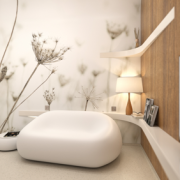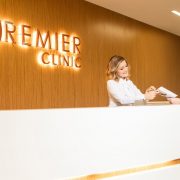Lipedém – Pandémia neznámeho ochorenia
Pandémia je dnes moderné slovo s ohľadom na minulosť. V súčasnej dobe, okrem iného môžeme hovoriť o pandémii obezity najmä v civilizovaných krajinách sveta EU, USA, Austrália. Nie je obezita ako obezita. Obezita je okrem iného definovaná všeobecnou veličinou tzv. Body Mass Indexom (BMI), kde sú stanovené rozmedzia podľa ktorých sa stanovuje či sa o obezitu jedná alebo nie. Z tohoto základného delenia sa nevymyká ani chorobné – patologické ukladanie tuku – tzv. Lipedém. Termín Lipedém je dobre známy v nemecky hovoriacich krajinách, kde najmä v Nemecku sa dá hovoriť o Pandémii a to jednak vychádzajúc z absolútnych čísel počtu postihnutej populácie ako aj z toho, že táto terminológia bola prijatá aj odbornou verejnosťou ako tzv. nozologická jednotka to znamená ako diagnóza (ako napríklad týfus) hoci nie je ešte zaradená v Medzinárodnej klasifikácii chorôb. Čo má za výsledok, že aj bežná populácia je konfrontovaná s touto diagnózou a sama sa necháva vyšetrovať u odborníkov za účelom následnej liečby. V našich končinách ČSR ale aj Poľsko, Maďarsko je tento „pojem” viac menej neznámy tak ako u odbornej tak aj u laickej verejnosti. Čím viac na východ tým menej je táto diagnóza známa (aj preto, že ázijské národy postihuje len minimálne). Neznámy je tak u obezitológov (česť výnimkám) ako aj u röntgen – diagnostikov, ktorí túto diagnózu a jej stupne potvrdzujú SONO vyšetrením. (samozrejme MRI je tiež vysoko priekazné len zbytočne drahé)Čo je to Lipedém:
Je to abnormálne ukladanie patologického tuku na predilekčných miestach a to najmä na dolných končatinách a v niektorých prípadoch aj na končatinách horných. Nepostihuje plosky rúk ani nôh. Je to generalizované ochorenie tuku. V mnohých prameňoch sa uvádza, že sa jedná o istý typ zápalového ochorenia, spôsobený zväčšením – hypertrofiou a zmnožením hyperpláziou tukových buniek. Bunky sú ukladané do tzv. konvolútov (zväzkov) a sú uložené v spojivom tkanive, niečo na princípe prírodnej špongie, kde v otvoroch sú uložené bunky. Vzhľadom na to, že bunky sú veľké, tkanivo sa o seba trie a vzniká aseptický zápal čoho výsledkom je vznik fibrózneho tkaniva de facto jazvy. Preto je Lipedémové tukové tkanivo výrazne tuhé oproti obyčajnému tukovému tkanivu. Z tohto dôvodu sa zmenila aj taktika invazívnej liečby, kde sa prešlo od používania tzv. vodného prúdu na využívanie ultrazvuku invazívnym spôsobom zariadením VASER.Treba rozlišovať Lipedém a Lymfedém:
Pri Lipedéme sa jedná o patologické nahromadenie tuku. Pri Lymfedéme sa jedná o patologickom zadržiavaní tekutín v istých častiach tela. Lipedém je symetrický vždy!!! Lymfedém je asymetrický!!! IV. štádium Lipedému môže byť kombinované s Lymfedémom.Typickým príznakom Lipedému je:
- spontánna bolesť v miestach postihnutia a
- dysmorfia tela – ťažká asymetria tela. Ženy často cvičia, dodržiavajú zdravú životosprávu a z problematických oblastí t.j. dolných končatín neschudnú.
- Veľkým problémom takto postihnutých žien okrem bolestí, zlého estetického vzhľadu vysokého BMI,
- Zapareniny – intertrigo
- je aj to, že si nevedia kúpiť na seba oblečenie konfekčnej veľkosti. To čo im „sedí” hore im „nesedí” na nohách.
- Únava.
Výsledkom je veľmi zlá kvalita života.

Stages of lipedema
Lipedema slowly worsens with time in many people. Lipedema stages include:- Stage 1: Your skin looks normal, but you can feel something like pebbles under your skin. You can have pain and bruising at this stage.
- Stage 2: Your skin surface is uneven and may have dimpling that looks like quilted stitching, a walnut shell or cottage cheese.
- Stage 3: Your legs can look like inflated rectangular balloons and you have large folds of skin and fat. Fat on your legs may stick out, making it hard to walk.
- Stage 4: You have lipedema and lymphedema at the same time.
Types of lipedema
You may have more than one type of lipedema at a time, depending on where you have symptoms. Types of lipedema include:- Type I: Fat is between your belly button and your hips.
- Type II: Fat is between your pelvis and knees.
- Type III: Fat is between your pelvis and ankles.
- Type IV: Fat is between your shoulders and wrists.
- Type V: Fat is between your knees and ankles.
Výskyt Lipedému:
Existujú rôzne štatistiky uvádzajúce rôzne čísla výskytu Lipedému u populácie, ale viacerá sa prikláňajú k číslu 10%. To znamená, že každá 10. žena zo 100 žien je postihnutá Lipedémom. To znamená že v Nemecku, je takto postihnutých niečo cez 8 000 000 žien (8 miliónov). Spolu v nemecky hovoriacich krajinách je to niečo okolo 10 miliónov žien. V československej populácii je to približne 1,5 milióna žien.
Problém Československa je ten, že ľudia o danom ochorení takmer nič nevedia. Pozorujú na sebe zmeny, nevedia sa obliecť, majú bolesti najmä dolných, vadí im celkový ich vzhľad, diéty ani cvičenia neúčinkujú, alebo len minimálne. Ľudia sú frustrovaní, depresívni, „anxiózni” podráždení, nepodávajú adekvátny výkon v rodine ani v práci. Výrazne klesá výkonnosť a sebavedomie z čoho následne pramenia mnohé psychické problémy aj hore uvedené.
V lete je najlepšie možné vidieť ako veľa žien trpí Lipedémom. Podľa mojich skúseností, bez štatistického dokazovania, je to takmer každá 6-8 žena, ktorá má voľným okom viditeľný Lipedém rôznych štádií a typov.
Preto je nevyhnutné pozdvihnúť povedomie o tejto „Chorobe” tak ako u odbornej tak aj u laickej verejnosti, aby sme týmto ľuďom mohli pomôcť, čím sa vylepší fyzické a najmä psychické zdravie oboch spoločností.
Je Lipedém liečiteľný?
Hneď v úvode je potrebné povedať, že zatiaľ Lipedém ako taký liečiteľný nie je. Treba však povedať a to dosť dôrazne, že to nie je ani smrteľné ochorenie a čo je najdôležitejšie že sa dajú zmierniť jeho dopady na život. V súčasnosti disponujeme technológiami, ktoré vedia výrazne zlepšiť kvalitu života pacientov s Lipedémom.Liečba Lipedému vyžaduje komplexný prístup
Konzervatívna liečba
- Protizápalová diéta s výrazným obmedzením najmä jednoduchých cukrov najmä Sacharóza – bežný cukor a pokrmy, ktoré ho obsahujú. Redukcia príjmu polysacharidov – cestoviny, chlieb. Cukor pôsobí laicky povedané ako palivo pre zápal a v tukovom tkanive postihnutom Lipedémom takýto zápal prebieha.
- Protizápalové lieky
- Prírodné extrakty typu Curcuma
- Neinvazívne technológie – manuálna lymfodrenážna masáž, elastické pančuchy alebo legíny vyrobené priamo na zmenšenie príznakov Lipedému. Teoreticky pneumatické punčochy.
- Fyzická aktivita, aeróbny tréning
Invazívna liečba:
By mala nastúpiť pri neúspechu konzervatívnej liečby, ktorá trvala minimálne 6 mesiacov až 1 rok. V súčasnosti sa postupne prechádza od využívania vodného paprsku k modernejším technológiám typu ultrazvuku (VASER). Ultrazvuk bol pôvodne vyvinutý na chirurgiu pečene a mozgu, pretože minimálne poškodzuje cievy a nervy čím výrazne znižuje krvácanie, na ktoré je Lipedémové tukové tkanivo veľmi náchylné, pretože je výrazne prekrvené.Výhody ultrazvukovej liposukcie oproti WAL
- Časový faktor – trvanie operácie sa výrazne skrátilo oproti vodnému prúdu a to z dôvodu fibrózy, jazvovitého tkaniva, ktorým je Lipedém charakteristický. Ultrazvuk veľmi dobre rozrušuje jazvovité – fibrózne tkanivo. Tým sa skracuje dĺžka uspania pacienta
- Výrazné zníženie krvných strát pri výrazne rýchlejšom operačnom postupe
- Redukuje, aj keď nie úplne eliminuje, možnosť vytvorenia nerovností. Hoci Lipedémom postihnuté končatiny sú primárne – prvotne nerovné.
- Urýchlenie operácie
- Zachovanie tzv. fibroseptal network, čo je tkanivo medzi kožou a svalmi, zodpovedné za povolenie kože.

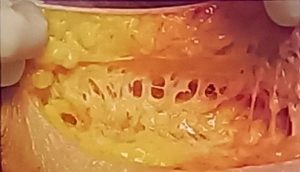
Cieľový orgán – fibroseptal network
Ďalší krok je odsatie tuku pomocou vibračnej liposukcie, ktorá je šetrná ku tkanivám a dokonale pomáha odsať uvolnené tukové bunky Vaserom. Na záver je potrebné spevniť povolenú kožu – práve pomocou aplikácie vysokého tepla na kolagénne vlákna – Fibroseptal network – FSN. Využíva sa na to ionizovaný vzácny plyn = Plazma a to buď Argón, alebo Hélium. Kolagén sa zahrieva na krátku dobu až na teplotu 85°C. Bežne stačí na stiahnutie kolagénu 65°C, čo je teplota denaturácie bielkovín. V prípade plazmy sú to však milisekundy a miesto je následne hneď aj chladené. Prúd plazmy je selektívne navádzaný na vlákna kolagénu, pretože prvé, kam tento prúd „ide” je miesto najnižšieho odporu a tým je vlastne kolagén. Potom nasleduje tuk, svaly atď. Toto je obrovská výhoda oproti Laseru, kde sa tepelná energia šíri všade dookola aplikačnej kanyly a „páli” všetko okolo. Dnes sa od Laserovej liposukcie úplne upustilo!!!!! Výsledkom je stiahnutie a priľnutie inak ovisajúcej kože ku svalovej kostre. Treba však upozorniť, že ani plazma nedokáže robiť zázraky, a tam kde je koža veľmi povolená a poškodená procesmi priberania, chudnutia, predchádzajúcich liposukčných zákrokov, slnka, je niekedy len jediná možnosť a tou je „odrezanie” tohto prebytku kože.Pooperačná starostlivosť:
- Antibiotiká, lieky na prevenciu trombózy, lieky od bolesti a lieky na opuchy.
- Hneď ako je to možné, je potrebné absolvovať Manuálnu lymfodrenážnu masáž robenú zaškoleným fyzioterapeutom. Minimálne prvých 10 dní každý deň, následne aspoň 2x do týždňa.
- Hyperbarická komora – výrazne urýchľuje rekonvalescenciu a hojenie. Výhodné je použiť HK, aj pred operáciou 1-2x. Tým sa stav po operácii ešte viac zlepšuje, urýchľuje sa rekonvalescencia. Redukujú sa pooperačné komplikácie najmä poruchy prekrvenia po Bodycontouringu, po abdominoplastikách a podobne.
- Necvičiť vo fitness minimálne 8 týždňov.
- 23/7 nosiť špeciálne Lipedémové elastické prádlo.
- Prechádzky, Nordic walking.
- Neplávať minimálne 8 týždňov.
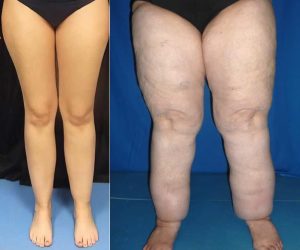
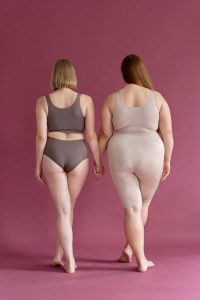
MUDr. Peter Chovan
Premier Clinic Praha
